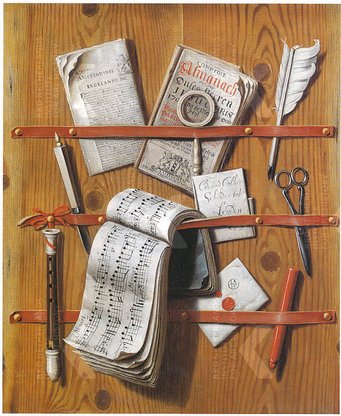Media Revolutions and Images

The research group investigates visualizations of knowledge against the background of media changes in the late medieval and early modern period. We want to understand how different media impact the way in which knowledge can and was depicted and visualized.
The introduction of the movable-type printing press in Europe is a major event in this historical investigation. We research the introduction of prints alongside the continuous use of manuscripts, as well as the invention of new instruments as microscopes and telescopes, and the introduction of the scientific journal as a medium of scientific communication. Interdisciplinarity between history of science, history or art, book history, and media studies are key, as well as an awareness of our current existence in the digital media revolution. We work with the premises that the impact between new media, new forms of communication and new ideas worked not in one linear, or even causal, direction but rather in all directions. This means that new scientific break throughs might also have called for new forms of visualization, while printed books and journals have also had an impact on the way that visual communication worked. We investigate various early modern “scientific” traditions and their visual developments, and make comparisons between these fields to understand better the various key changes. Key questions are: How are different media used to communicate knowledge and scientific information visually? What was the impact of the printing press, of the introduction of scientific journals, and the reaching of wider audiences on the ways that authors, publishers, and artists visualized their ideas? And might some intellectual ideas have pushed for new medial forms and/or the use of new instruments of vision?
Simultaneously, while we work as a group of (art) historians on media changes that occurred 500 years ago, and its influence on visual communication, it seems only logical to also consider the current media revolution in which we live and work. Within the group we therefore reflect on our own practices as (art) historians and how these have changed within the past decades with the help and impact of digital media. The way that we search for books, that way that we can visualize networks of authors, publishers, or early modern scientists, and the fact that we can compare images and art works in digitized forms from all over the world on our computer screens. Have these developments changed our questions, and research approaches? And can this knowledge teach us something new about the media revolutions that happened in the early modern period? Not only are we investigating and questioning our own work within the humanities, but to draw more parallels between early modern scientific practices and current practices we engage with natural scientists, and artist to understand their workings as well as their reflections on new media.
Former Group Members
Marvin Bolt, Ph.D.: Visualizing the Heavens: The Material Culture of Early Telescopes and the Star of Bethlehem
Dr. Alicia Hughes: Authorial Control/Artistic Agency: Graphic Techniques and Intaglio Methods in Eighteenth-Century Scientific Image-making Practices
Ariella Minden, M.A.: In Dialogue: Medial Thinking in Bolognese Printmaking, 1500–1530
Alejandro Octavio Nodarse, M.A.: Operations of the Image: Painting, Medicine, and the Origins of Aesthetics in Early Modern Rome and Naples
Elisa Spataro, Ph.D.: Arte e tecnologia: le macchine prospettiche e l’immagine del paesaggio
Jaya Remond, Ph.D.: Expanding Fields of Vision: Pictures, Plants, and Artistic Authority
Katherine Reinhart, Ph.D.: Images for the King: Art, Science, and Power in Louis XIV’s France
Oscar Seip, M.A.: Visualizing Theatres of Knowledge: The Science and Media of Epistemic Theatres in Early Modern Europe
Aleksander Musiał, Mphil.: Immersion: Classical Reception and Eastern European Transformations of Hygiene Architecture, ca. 1680–1830
Dr. Leendert van der Miesen: The Visual World of Early Modern Acoustics, 1660–1718
